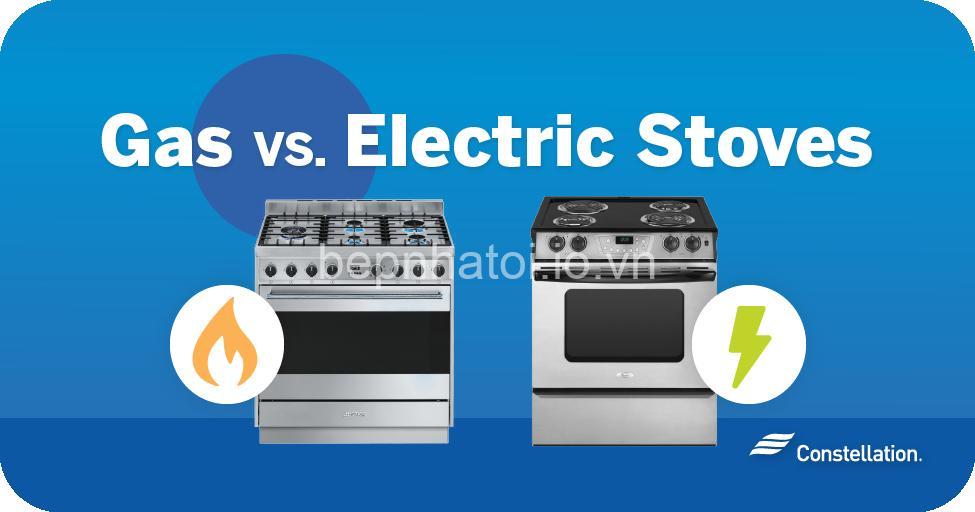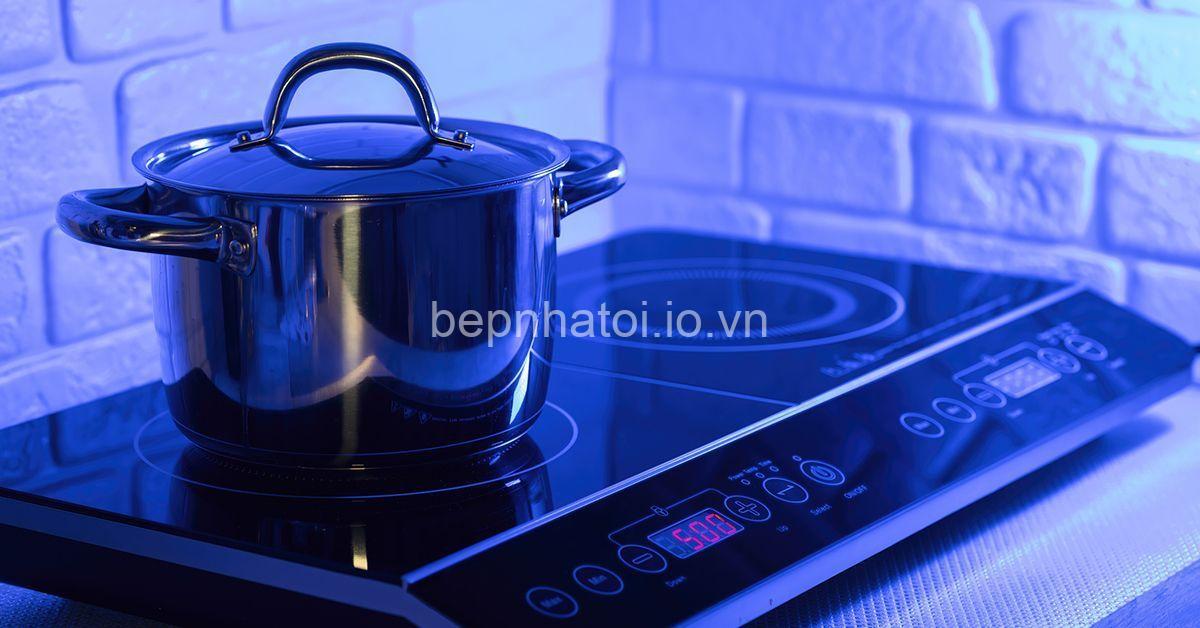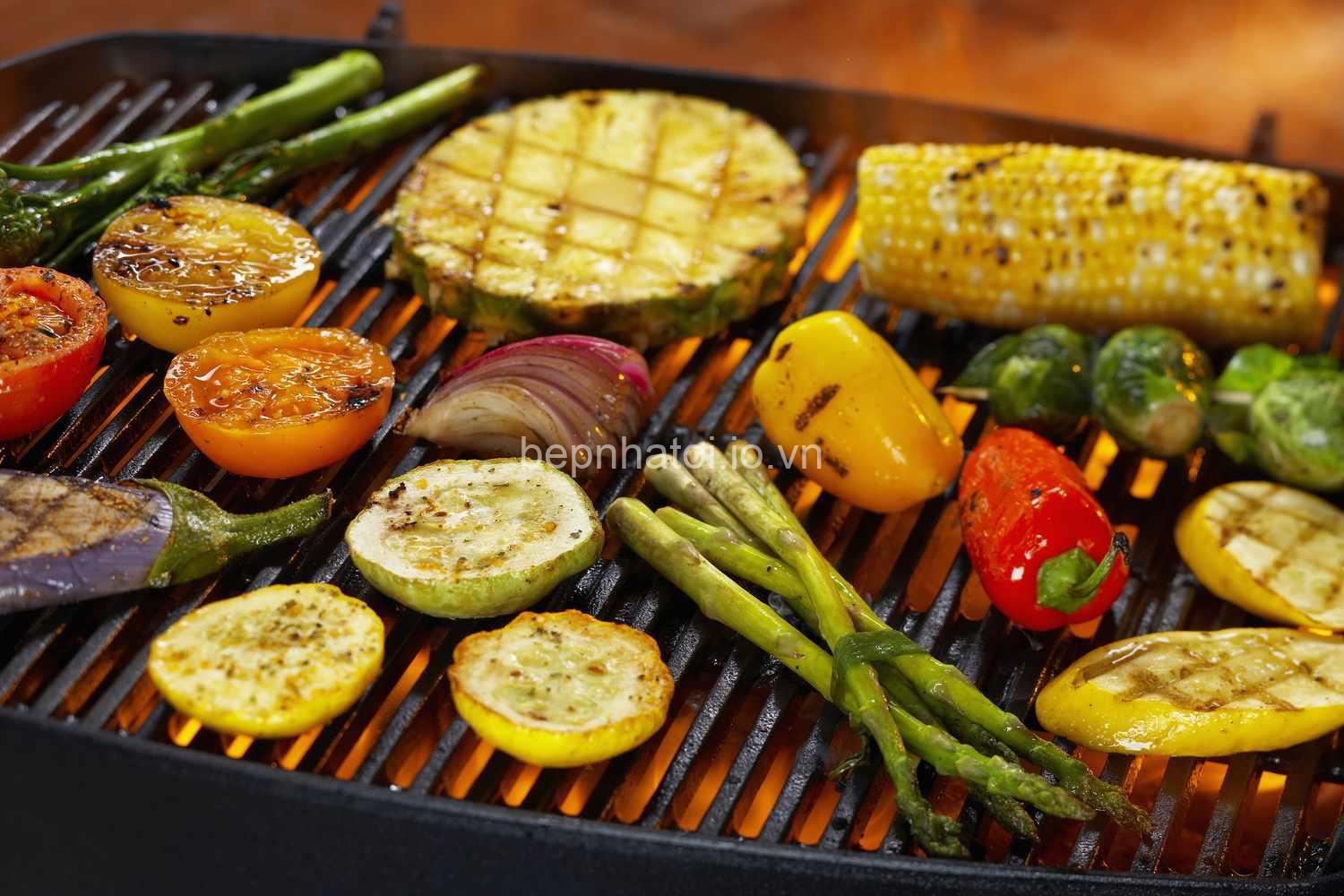
Electric vs Gas Stoves: Key Differences & Cooking Performance. In today’s article, bepnhatoi.io.vn will explore with you in the most detailed and complete way. See now!
What are the Key Differences Between Electric and Gas Stoves?
The fundamental difference between electric and gas stoves lies in their heat sources: electric stoves use electricity to generate heat, while gas stoves utilize natural gas or propane. This difference has significant implications for how these stoves perform, from heating speed and temperature control to versatility and safety.
Electric stoves are known for their precise temperature control. Electric heating elements provide even heat distribution, making them ideal for tasks requiring precise temperature control, like baking or simmering. Gas stoves offer a more responsive heating experience, with flames that adjust quickly, making them a popular choice for searing meats, stir-frying, or achieving specific cooking effects.
Electric stoves offer various types, each with its own set of advantages and drawbacks. Coil top stoves feature exposed heating coils that heat up quickly but can be slower to cool down. Smooth top stoves use ceramic or glass surfaces, offering a sleek look and easier cleaning but may require special cookware for optimal results. Induction stoves utilize electromagnetic fields to heat cookware directly, providing extremely fast heating times and precise temperature control but requiring specialized induction cookware.
Gas stoves also come in different types, offering a range of heat intensity and versatility. Open burner stoves offer direct flame exposure, providing highly responsive heat control but requiring careful attention to prevent spills and fires. Sealed burner stoves have a protective cover over the burner, making them easier to clean and potentially safer, but they may not offer the same level of responsiveness as open burners.

Cooking Performance: Speed, Control, and Versatility
The differences in heating methods directly impact cooking performance. Electric stoves typically heat slower than gas stoves but offer more consistent and even temperature control. Boiling water on an electric stove can take slightly longer, but the precise temperature control makes them ideal for delicate tasks like simmering sauces or melting chocolate.
Gas stoves excel in tasks requiring high heat, like searing steaks or stir-frying vegetables. The responsive flame allows for quick adjustments, ensuring perfect browning and sear marks. However, gas stoves might require a little more practice to achieve precise temperature control for delicate tasks.
Electric stoves are often considered more energy-efficient, especially induction stoves, which convert almost all energy into heat. Gas stoves, while generally faster, may use more energy due to heat loss and can fluctuate in cost depending on the price of natural gas or propane.
Electric stoves often have a smoother heat distribution due to the consistent heat generated by the element. This consistency helps with even cooking and reduces hot spots. While gas stoves can achieve localized high heat for searing, the heat distribution can be less consistent. This can lead to uneven cooking, requiring more frequent monitoring.
Safety, Maintenance, and Energy Efficiency
Electric stoves are generally considered safer than gas stoves because they lack open flames. However, certain types of electric stoves, such as those with exposed coils, can pose a burn risk, especially for children. Additionally, electric stoves require proper grounding and wiring to prevent electrical shocks.
Gas stoves, on the other hand, pose a greater risk due to the open flame. It’s essential to practice safety precautions, such as keeping flammable objects away from the stovetop and always keeping an eye on the flames. Gas stoves can also be more challenging to clean due to spills and potential for food buildup around the burners.
Electric stoves tend to be easier to clean due to their smooth surfaces, while gas stoves may require more effort to scrub away spills and food particles.
In terms of energy efficiency, electric stoves generally consume less energy than gas stoves, particularly when using induction stoves. However, the cost of electricity varies, and gas stoves can be more cost-effective in areas with lower natural gas prices.
Cost and Lifespan: Making a Smart Investment
Electric stoves are often more affordable upfront, especially coil top and smooth top models. However, induction stoves can be more expensive due to the specialized technology involved.
Gas stoves can be more expensive initially, especially those with advanced features like high-BTU burners or griddles. However, the cost difference can be offset by lower gas prices in some regions.
The lifespan of both electric and gas stoves can vary depending on the quality, use, and maintenance. Generally, electric stoves are known for their longer lifespans, with components that are less susceptible to wear and tear. Gas stoves, on the other hand, may require more frequent repairs due to components like burner grates or control knobs.
Making the Right Choice for Your Kitchen
Choosing between an electric and gas stove depends on your individual needs and preferences. Electric stoves offer precise temperature control, energy efficiency, and ease of cleaning, making them a good choice for those who prioritize precision cooking, baking, or energy savings.
Gas stoves excel in tasks requiring high heat and responsiveness, like searing, stir-frying, or achieving specific cooking effects, making them a preferred choice for those who enjoy versatility and control over the flame.
Consider your budget, cooking style, and kitchen layout when making your decision.
Electric Stove Types: A Closer Look
Coil Top Stoves: These stoves feature exposed heating coils that heat up quickly but can be slower to cool down. They are generally more affordable and offer a traditional cooking experience.
Smooth Top Stoves: These stoves use a sleek, smooth ceramic or glass surface that provides a modern aesthetic and easy cleaning. However, they may require special cookware with flat bottoms to prevent scratching or uneven heat distribution.
Induction Stoves: These stoves utilize electromagnetic fields to heat cookware directly, offering extremely fast heating times, precise temperature control, and energy efficiency. However, induction stoves require specialized induction cookware that contains magnetic metals for optimal performance.
Gas Stove Types: A Closer Look
Open Burner Stoves: These stoves feature open flames that provide highly responsive heat control and are ideal for searing or achieving specific cooking effects. However, they require careful attention and can pose a burn risk due to the exposed flame.
Sealed Burner Stoves: These stoves have a protective cover over the burner, making them easier to clean and potentially safer. The sealed burners also help prevent spills and debris from falling into the burner.
High-BTU Burners: These burners produce a powerful flame with a higher BTU rating, allowing for faster heating and higher temperatures, making them ideal for tasks requiring intense heat, like stir-frying or grilling.
Finding the Best Stove for Your Needs
When choosing the right stove for your kitchen, consider these key factors:
- Features: What are the essential features you need, such as precise temperature control, high-heat capabilities, or special burner configurations?
- Price: Set a budget and consider the initial purchase cost and potential ongoing costs (electricity or gas bills).
- Cooking Style: What types of cooking do you enjoy, and what features would best support your style (searing, baking, simmering, stir-frying)?
- Lifestyle: How often do you cook, and what are your priorities (speed, efficiency, safety)?
- Space: Consider the size of your kitchen and the available counter space for the stove.
Take your time, research different models, and read consumer reviews before making your final decision.
Beyond the Stove: Important Considerations
Beyond the stove type, there are additional factors to consider that can impact your overall cooking experience:
- Ventilation: Both electric and gas stoves require proper ventilation to remove fumes and odors. Consider installing a range hood or other ventilation system to keep your kitchen safe and comfortable.
- Kitchen Layout: Your kitchen layout can influence stove choice. Consider the placement of the stove in relation to other appliances and the available counter space.
- Safety Features: Always prioritize safety. Ensure the stove you choose has essential safety features, such as a child lock or automatic shut-off.
Resources and Further Reading
For more in-depth information and insights, explore these resources:
- Consumer Reports: Provides reviews and ratings for various electric and gas stoves.
- Good Housekeeping: Offers expert advice and recommendations for choosing the right stove for your kitchen.
- Appliance Retailer Websites: Provides detailed information on specific models and brands.
- Cooking Blogs: Offers insights and tips from experienced cooks about using both electric and gas stoves.
Conclusion
Choosing the right stove can significantly impact your cooking experience. By understanding the key differences between electric and gas stoves and considering your individual needs and preferences, you can make an informed decision. Don’t forget to explore additional resources and check out consumer reviews to ensure you make the best choice for your kitchen!
Share your thoughts in the comments, let us know which type of stove you prefer, and tell us about your favorite cooking experiences. For more insightful articles about all things related to animals, visit bepnhatoi.io.vn.





